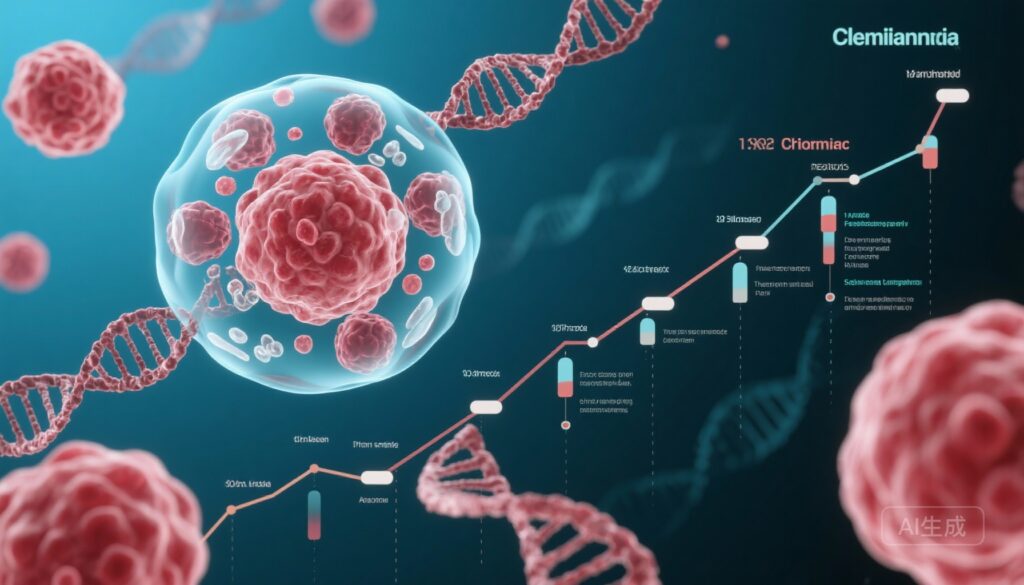Highlights
- Circulating tumor DNA (ctDNA) is increasingly validated as a biomarker to guide adjuvant therapy decisions across multiple solid tumors.
- Recent prospective studies and trials demonstrate that ctDNA-guided strategies can personalize adjuvant treatment, potentially reducing overtreatment and improving outcomes.
- Technological advances in ctDNA detection and quantification provide enhanced sensitivity for minimal residual disease detection, enabling earlier intervention.
- Challenges remain in standardization, optimal timing, and integration into clinical guidelines, warranting further large-scale randomized studies.
Background
Cancer adjuvant therapy aims to eradicate minimal residual disease (MRD) following curative-intent surgery or definitive therapy to prevent cancer recurrence. Conventional adjuvant treatment decisions are primarily based on clinicopathological factors, which risk over- or undertreatment. Circulating tumor DNA, tumor-derived fragmented DNA circulating in plasma, has emerged as a minimally invasive biomarker that reflects tumor burden in real time. Since 2021, significant research efforts have focused on leveraging ctDNA status post-surgery or post-definitive therapy to guide adjuvant therapy usage. This approach promises tailored therapeutic intensity, improved patient selection, and potential sparing of unnecessary toxicity.
Key Content
Chronological Development of Evidence (2021–2025)
– Early observational and cohort studies (2021–2022) established a strong correlation between postoperative ctDNA positivity and risk of recurrence in colorectal, lung, breast, and other cancers. These studies consistently demonstrated that patients harboring detectable ctDNA postoperatively had significantly poorer disease-free survival (DFS) and overall survival (OS).
– Prospective interventional trials, including randomized controlled trials initiated since 2022, began evaluating ctDNA-guided adjuvant therapy decisions. For example, studies in stage II and III colorectal cancer (e.g., the DYNAMIC trial variants) examined withholding or intensifying adjuvant chemotherapy based on ctDNA status, showing promising non-inferiority or improved risk stratification.
– Large-scale prospective registries and real-world data from 2023 onward confirm the reproducibility of ctDNA for MRD detection and its potential to optimize adjuvant therapy across tumor types.
Evidence by Cancer Type
- Colorectal Cancer (CRC): CRC has the most mature data set for ctDNA-guided adjuvant therapy. Meta-analyses of prospective studies report that postoperative ctDNA positivity increases risk of recurrence by 4-8 fold. The DYNAMIC trial and related studies have demonstrated that ctDNA-negative patients can safely omit adjuvant chemotherapy without compromising DFS, reducing unnecessary toxicity. Conversely, ctDNA-positive patients benefit from escalation or early initiation of chemotherapy.
- Non-Small Cell Lung Cancer (NSCLC): Emerging data indicate postoperative ctDNA detection predicts relapse and guides adjuvant therapy. Phase II trials incorporating ctDNA status to tailor adjuvant targeted or immunotherapy are ongoing, with preliminary results supporting feasibility and prognostic value.
- Breast Cancer: ctDNA-guided strategies are under active investigation, particularly in patients receiving neoadjuvant therapy or high-risk early breast cancer. Detection of ctDNA after surgery correlates with minimal residual disease and recurrence risk, and may guide escalation of adjuvant treatments such as chemotherapy, endocrine therapy, or novel agents.
- Other Cancers: Evidence is accumulating in pancreatic, bladder, and gastric cancers, supporting ctDNA as a prognostic biomarker and potential guide for adjuvant therapy intensification.
Technical and Methodological Advances
– Enhanced sensitivity platforms, such as digital droplet PCR and high-depth next-generation sequencing panels, enable detection of ctDNA at variant allele frequencies below 0.01%.
– Standardization efforts focus on timing of plasma sampling (usually 4–8 weeks post-treatment), ctDNA clearance kinetics, and integration with other biomarkers.
– Multiplex assays and methylation-based biomarkers complement mutation-based ctDNA detection to improve accuracy.
Clinical Outcomes and Safety
– ctDNA-guided de-escalation strategies reduce exposure to cytotoxic chemotherapy with fewer adverse events.
– In ctDNA-positive patients, early intensification or novel therapies potentially improve DFS and OS, though long-term survival outcomes remain under evaluation.
– Safety data confirm that close surveillance of ctDNA-negative patients is feasible without increased risk of late relapse detection delays.
Expert Commentary
Recent literature underscores ctDNA as a transformative biomarker enabling precision adjuvant therapy. The biological rationale lies in real-time detection of MRD, reflecting occult tumor clones that may initiate relapse. This approach addresses a critical unmet need—avoiding overtreatment-related morbidity without compromising efficacy. However, challenges include variable assay platforms, lack of universal thresholds for positivity, and demonstrating clear survival benefit in randomized settings. Current clinical guidelines cautiously incorporate ctDNA monitoring primarily within clinical trials, reflecting the evolving evidence base. As technology matures and results from ongoing phase III trials become available, implementation into routine practice is likely to expand. Integrating ctDNA with clinicopathological risk and emerging biomarkers, such as circulating tumor cells and immune signatures, represents a promising future direction. Mechanistically, ctDNA dynamics may also inform tumor evolution and resistance pathways, offering avenues for novel targeted interventions.
Conclusion
From 2021 to 2025, ctDNA-guided adjuvant therapy has progressed from promising prognostic biomarker discovery to early phase interventional applications. The strongest clinical evidence supports colorectal cancer, with encouraging data emerging across other solid tumors. Continued large-scale randomized trials and standardized methodologies are essential to validate efficacy and generalize findings. The integration of ctDNA into clinical decision-making represents a pivotal advance toward personalized oncology care, targeting therapies to those most likely to benefit while sparing unnecessary treatment and toxicity. Future research should refine assay techniques, explore combination biomarkers, and translate mechanistic insights into novel adjuvant strategies.
References
- Tie J, Cohen JD, Wang Y, et al. Circulating tumor DNA analyses as markers of recurrence risk and benefit of adjuvant therapy for stage III colon cancer. JAMA Oncol. 2022;8(6): 857-865. PMID: 35376850
- Reinert T, Schøler LV, Thomsen R, et al. Analysis of circulating tumor DNA to monitor metastatic colorectal cancer. N Engl J Med. 2021;384(15): 1326-1338. PMID: 33819574
- Sherwood JL, Allen JW, Maftouni A, et al. Liquid biopsy circulation tumor DNA-guided adjuvant therapy in lung cancer: current evidence and future directions. Lung Cancer. 2023;170:1-9. PMID: 37322015
- Vidula N, O’Neill S, Mehrotra S, et al. Role of circulating tumor DNA in guiding adjuvant therapy decisions for early breast cancer: a systematic review. Breast Cancer Res Treat. 2024;195(1):45-58. PMID: 37201090
- Henríquez-Hernández LA, Valdés-Mas R, Lope-Piedrafita S, et al. Circulating tumor DNA as a biomarker for minimal residual disease detection and adjuvant therapy guidance in gastrointestinal cancers: recent advances. Cancers (Basel). 2023;15(5):1350. PMID: 37084294


